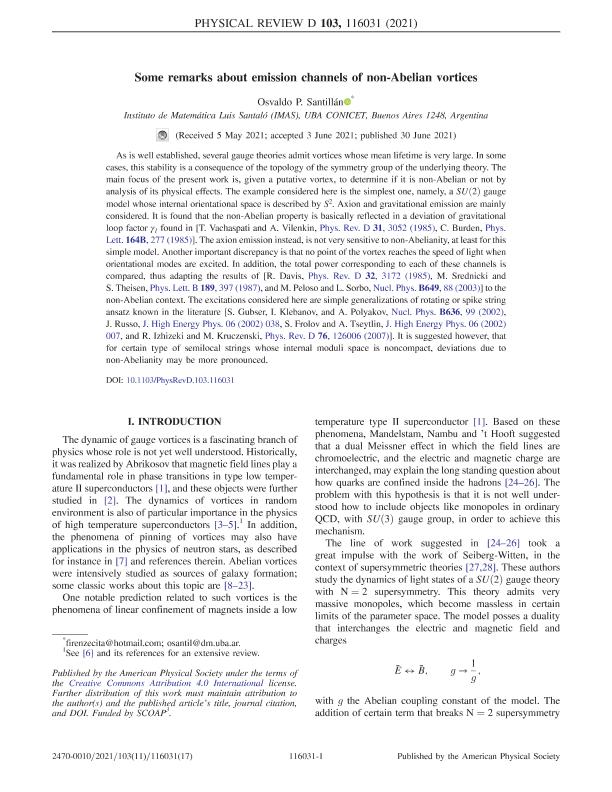Artículo
Some remarks about emission channels of non-Abelian vortices
Fecha de publicación:
30/06/2021
Editorial:
American Physical Society
Revista:
Physical Review D: Particles, Fields, Gravitation and Cosmology
ISSN:
1550-7998
Idioma:
Inglés
Tipo de recurso:
Artículo publicado
Clasificación temática:
Resumen
As is well established, several gauge theories admit vortices whose mean life time is very large. In some cases, this stability is a consequence of the topology of the symmetry group of the underlying theory. The main focus of the present work is, given a putative vortex, to determine if it is non abelian or not by analysis of its physical effects. The example considered here is the simplest one namely, a SU(2) gauge model whose internal orientational space is described by S2. Axion and gravitational emission are mainly considered. It is found that the non abelian property is basically reflected in a deviation of gravitational loop factor γl found in [25]-[26]. The axion emission instead, is not very sensitive to non abelianity, at least for this simple model. Another important discrepancy is that no point of the vortex reaches the speed of light when orientational modes are excited. In addition, the total power corresponding to each of these channels is compared, thus adapting the results of [1]-[3] to the non abelian context. The excitations considered here are simple generalizations of rotating or spike string ansatz known in the literature [4]-[7]. It is suggested however, that for certain type of semi-local strings whose internal moduli space is non compact, deviations due to non abelianity may be more pronounced.
Palabras clave:
Gravitational
,
Axion
,
Emission
,
String
Archivos asociados
Licencia
Identificadores
Colecciones
Articulos(IMAS)
Articulos de INSTITUTO DE INVESTIGACIONES MATEMATICAS "LUIS A. SANTALO"
Articulos de INSTITUTO DE INVESTIGACIONES MATEMATICAS "LUIS A. SANTALO"
Citación
Santillán, Osvaldo Pablo; Some remarks about emission channels of non-Abelian vortices; American Physical Society; Physical Review D: Particles, Fields, Gravitation and Cosmology; 103; 11; 30-6-2021; 1-17
Compartir
Altmétricas




